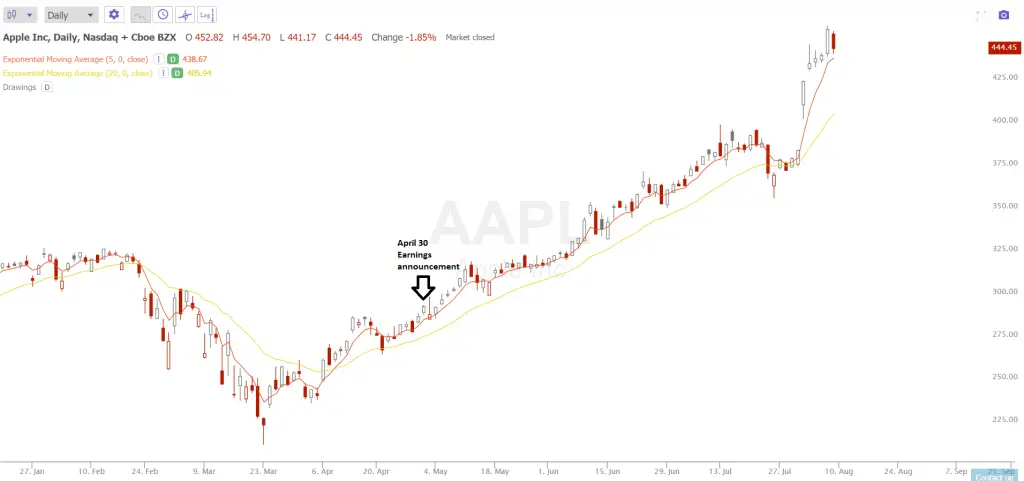In trading and investing post earnings announcement drift (or PEAD) is the theory that a stock’s price action tends to trend in the same direction as an earnings surprise causes it to go. This effect usually starts with a gap in the direction that it will go for the next few weeks or even months in some cases.
After a company’s current quarterly earnings become public, the revenue, earnings, growth, and profit margin will try to be quickly adjusted in the stock price by traders and investors and priced into it efficiently. Then usually the momentum of the move will cause a trend in the direction of the gap.
An uptrend begins after the market likes the earnings that are announced as some holders take profits, others let their winner run, and new buyers come in as the companies fundamentals look better while momentum and trend traders can also come in on the technical strength.
A downtrend can begin after the market doesn’t like the earnings that are announced if holders decide to cut losses, others let their loser run hoping for a bounce back, and short sellers could come in as the companies fundamentals look worse and momentum and trend traders can also come in on the technical weakness.
Be aware that a stock can rally on bad earnings if they are still better than expectations or sell off on good earnings if they do not meet analysts expectations. How the market reacts to an earnings announcement has more to do with what has already been priced in and expectations than the fundamental numbers reported.
For companies that report good quarterly earnings outsized price trends can drift upwards for a minimum of 60 days following the positive earnings announcement. Also, firms reporting poor earnings performance can have their stock price trend downwards for 60 days as well. This two month trending pattern is called post earnings announcement drift.
This theory and pattern was initially found and studied by Ray J. Ball & P. Brown in 1968. This is a major repeating market pattern which goes against efficient market theory. PEAD is a robust and profitable tendency and is backtested and studied by market educators and researchers.
The trending pattern can be understood with a few explanations. The effect of price movement is best understood by happening due to investor and traders both under invested going into earnings and then followed by an under reaction of buying and selling on the day of the earnings announcement. The trend that takes place next is caused by people chasing an uptrend that is underway with little selling pressure or holders selling to get out of a downtrend underway with little buying pressing coming in as support.
PEAD is a form of trend trading by using technical momentum price signals of higher highs or breakouts or the inverse for downtrends. It can also be a form of growth investing based on the fundamentals of company earnings and sales growth.
While it does not always work it is one possible edge in the market more times than not over the long term.
